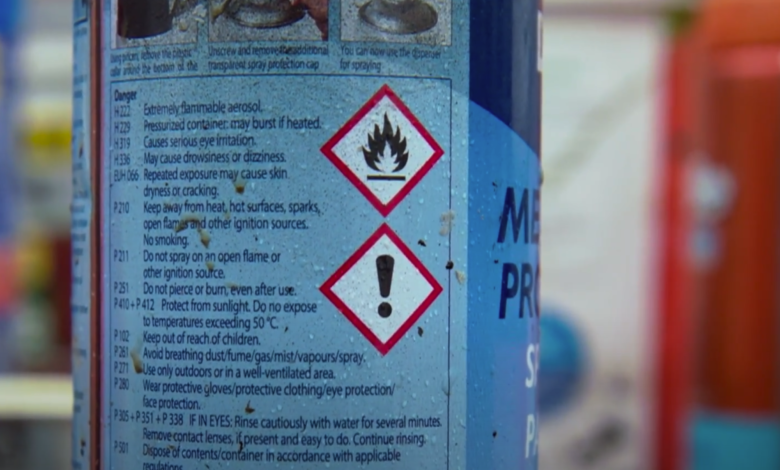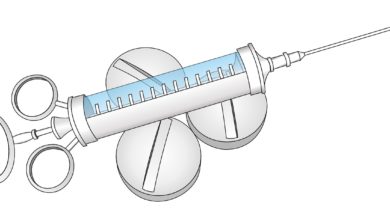Dangerous Substances
Harmful Substances

There are many harmful substances that can negatively affect human health. It’s important to avoid exposure to harmful substances whenever possible and to seek medical attention if you suspect that you have been exposed to a harmful substance. Here are some examples:
- Tobacco: Tobacco contains harmful chemicals, including nicotine, tar, and carbon monoxide. Smoking can cause lung cancer, heart disease, stroke, and other health problems.
- Alcohol: Excessive alcohol consumption can damage the liver, brain, and other organs. It can also lead to addiction and increase the risk of accidents, injuries, and other health problems.
- Illicit drugs: Illicit drugs such as cocaine, heroin, and methamphetamine can be highly addictive and cause a range of physical and mental health problems.
- Environmental pollutants: Exposure to environmental pollutants such as lead, mercury, and pesticides can cause a range of health problems, including developmental delays, cognitive impairments, and cancer.
- Prescription drugs: Prescription drugs can be harmful if they are not used properly or if they are taken in excessive amounts. Some prescription drugs can be addictive and lead to dependence and withdrawal symptoms.
- Food additives: Some food additives, such as artificial colors, flavors, and preservatives, have been linked to health problems such as hyperactivity, allergies, and cancer.
- Heavy metals: Heavy metals such as lead, cadmium, and mercury can accumulate in the body over time and cause a range of health problems, including neurological damage, kidney damage, and cancer.
- Air pollution: Air pollution can cause a range of health problems, including respiratory disease, heart disease, stroke, and lung cancer.
- Asbestos: Exposure to asbestos can cause a range of health problems, including mesothelioma, lung cancer, and asbestosis.
- Pesticides: Pesticides can be harmful to human health if they are not used properly or if people are exposed to them in excessive amounts. Some pesticides have been linked to cancer, birth defects, and neurological damage.
- Radon: Radon is a radioactive gas that can accumulate in buildings and cause lung cancer.
- BPA: Bisphenol A (BPA) is a chemical found in many plastics and other consumer products. It has been linked to a range of health problems, including hormonal imbalances, obesity, and cancer.
- Mercury: Mercury is a toxic metal that can accumulate in fish and other seafood. It can cause neurological damage, especially in developing fetuses and young children.
- Lead: Lead is a toxic metal that can be found in paint, water, and soil. It can cause developmental delays, cognitive impairments, and other health problems, especially in children.
- PCBs: Polychlorinated biphenyls (PCBs) are synthetic chemicals that were commonly used in electrical equipment and other industrial applications. Exposure to PCBs can cause a range of health problems, including cancer, neurological damage, and developmental delays.
- Dioxins: Dioxins are toxic chemicals that are produced by certain industrial processes. Exposure to dioxins can cause a range of health problems, including cancer, reproductive and developmental problems, and immune system damage.
- Phthalates: Phthalates are chemicals that are commonly used in plastics, cosmetics, and other consumer products. Exposure to phthalates can cause hormonal imbalances and reproductive problems.
- Glyphosate: Glyphosate is a herbicide that is commonly used in agriculture. It has been linked to a range of health problems, including cancer, developmental problems, and hormonal imbalances.
- Arsenic: Arsenic is a toxic metal that can be found in some foods and drinking water. Exposure to arsenic can cause a range of health problems, including cancer, cardiovascular disease, and neurological damage.
- Formaldehyde: Formaldehyde is a chemical that is commonly used in building materials and household products. Exposure to formaldehyde can cause respiratory problems, skin irritation, and cancer.
- Benzene: Benzene is a toxic chemical that is found in gasoline, cigarette smoke, and other industrial products. Exposure to benzene can cause cancer, neurological damage, and other health problems.
- Per- and polyfluoroalkyl substances (PFAS): PFAS are a group of chemicals used in a variety of industrial and consumer products. Exposure to PFAS can cause a range of health problems, including cancer, hormonal imbalances, and developmental problems.
- Nitrogen oxides: Nitrogen oxides are pollutants produced by motor vehicles, power plants, and other industrial sources. Exposure to nitrogen oxides can cause respiratory problems, cardiovascular disease, and other health problems.
- Acrylamide: Acrylamide is a chemical that is formed when certain foods are cooked at high temperatures, such as fried or baked goods. Exposure to acrylamide can cause neurological damage and may increase the risk of cancer.
- Cadmium: Cadmium is a toxic metal that can be found in some foods and drinking water. Exposure to cadmium can cause kidney damage, bone loss, and other health problems.
- Triclosan: Triclosan is an antimicrobial chemical that is commonly used in soaps, toothpaste, and other consumer products. Exposure to triclosan can disrupt the hormonal system and may contribute to antibiotic resistance.
- Flame retardants: Flame retardants are chemicals that are added to products such as furniture, electronics, and building materials. Exposure to flame retardants can cause reproductive problems, hormonal imbalances, and developmental delays.
- Ultrafine particles: Ultrafine particles are a type of air pollutant that can be emitted by vehicles and other sources. Exposure to ultrafine particles can cause respiratory problems and may increase the risk of cardiovascular disease.
- Formaldehyde: Formaldehyde is a colorless gas that is commonly used in building materials, household products, and some cosmetics. Exposure to formaldehyde can cause respiratory problems, skin irritation, and cancer.
- Vinyl chloride: Vinyl chloride is a chemical used in the production of PVC plastic and other products. Exposure to vinyl chloride can cause liver damage, nerve damage, and cancer.
- Radionuclides: Radionuclides are radioactive elements that can be found in some foods and drinking water. Exposure to radionuclides can cause cancer and other health problems.
- Aflatoxins: Aflatoxins are toxic substances produced by certain types of fungi. They can contaminate food crops such as peanuts, corn, and soybeans. Exposure to aflatoxins can cause liver damage and increase the risk of liver cancer.
- Perchlorate: Perchlorate is a chemical used in rocket fuel and other industrial applications. It can contaminate water supplies and affect thyroid function, which can cause developmental delays in children.
- Polycyclic aromatic hydrocarbons (PAHs): PAHs are a group of chemicals that are produced by the burning of fossil fuels, as well as by some industrial processes. Exposure to PAHs can cause cancer and other health problems.
- Bisphenol S (BPS): Bisphenol S (BPS) is a chemical that is often used as a substitute for bisphenol A (BPA) in plastics and other consumer products. Like BPA, BPS has been linked to hormonal imbalances and other health problems.
- Carbon monoxide: Carbon monoxide is a colorless, odorless gas that is produced by the incomplete combustion of fossil fuels. Exposure to carbon monoxide can cause headaches, dizziness, and other health problems, and can be deadly in high concentrations.
- Particulate matter: Particulate matter is a type of air pollutant that can be emitted by vehicles, power plants, and other sources. Exposure to particulate matter can cause respiratory problems and may increase the risk of cardiovascular disease.
It’s important to be aware of the potential health risks associated with exposure to harmful substances and to take steps to minimize your exposure whenever possible. If you suspect that you have been exposed to a harmful substance, seek medical attention right away.



